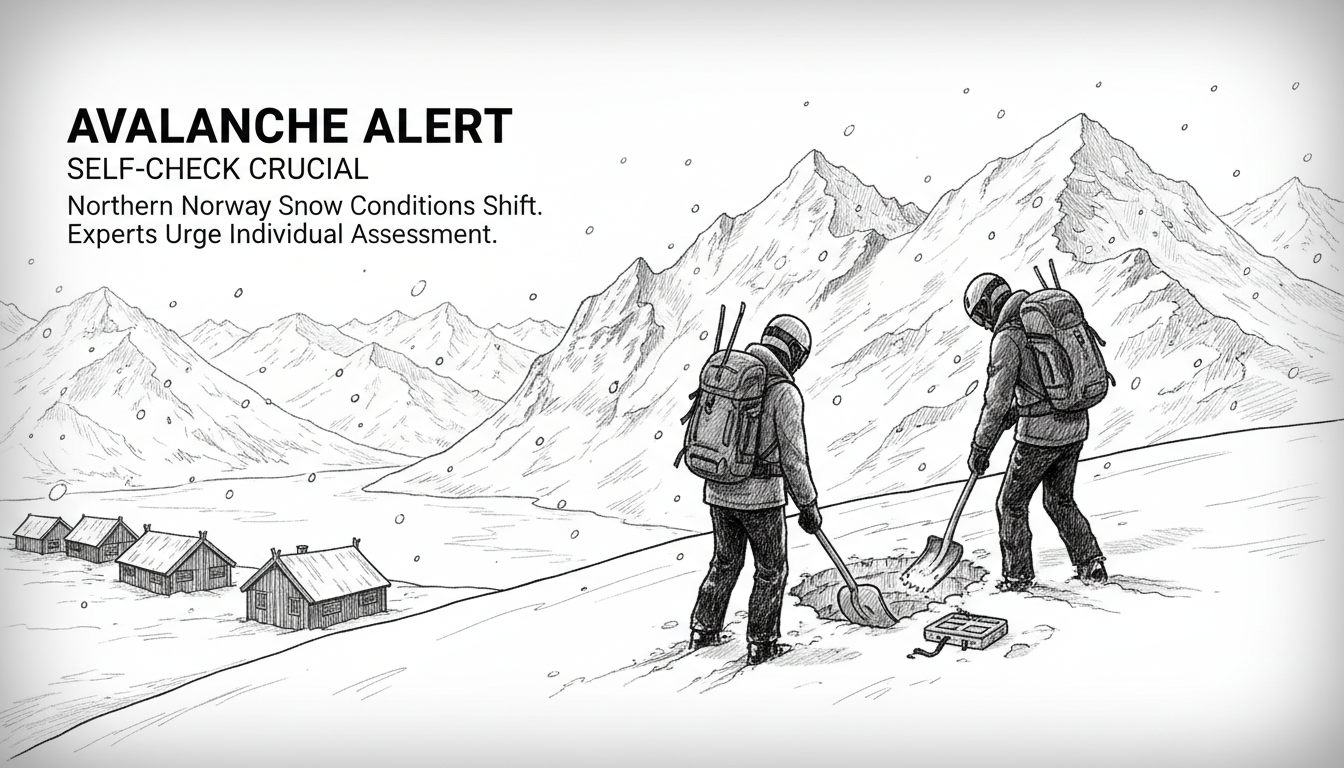Northern Norway faces increasing avalanche danger as fresh snow accumulates across mountain regions. The avalanche warning service Varsom reports excellent ski conditions but warns backcountry travelers about potentially deadly slides. Loose, unbound snow has built up to depths of 1.5 meters in some areas of Troms and Finnmark.
Heidi Bakke Stranden, a snow avalanche observer with the Norwegian Water Resources and Energy Directorate, describes the situation. "The snow has remained loose and unbound in Troms and Finnmark," she says. "In the mountains, there could easily be one and a half meters. So it's been a very good start to the ski season."
Despite the promising start, experts emphasize caution. The regional daily avalanche warning system doesn't begin operation until December 1. This creates a knowledge gap that requires individual responsibility. Stranden advises skiers to monitor how snow changes from light powder to wind-transported and bonded snow.
Professional skier Nikolai Schirmer from Tromsø shares his direct experience with avalanche risk. He recalls an incident where he and friends encountered a naturally triggered avalanche while ascending a gully. "It was snowing and blowing a bit, and it loaded up with snow above us," Schirmer describes. They leaned against a rock wall as the slide passed them, then made the decision to turn back.
Schirmer emphasizes that such events serve as important reminders. "That type of avalanche can happen, and it can become much larger," he notes, referencing a previous avalanche accident in Malangen. "The lesson there is to pay attention to weather and wind."
Both experts agree that while official warnings provide valuable information, personal observation remains crucial. Schirmer identifies three key danger signs: new snow, wind, or large temperature changes. These factors can indicate increasing avalanche risk even when official warnings aren't yet available.
The current situation highlights the balance between enjoying Norway's exceptional early-season conditions and maintaining safety awareness. With significant snow accumulation already present, the foundation exists for both excellent skiing and potential danger. Backcountry enthusiasts must make informed decisions based on both official information and their own observations.
Varsom encourages mountain visitors to share their observations through their app. This community-based approach helps build collective knowledge during the pre-season period when formal warning systems aren't fully operational. The exchange of real-time observations benefits both officials monitoring conditions and other backcountry users making daily decisions.
Norwegian avalanche safety operates on a principle of shared responsibility. While authorities provide warnings and infrastructure, individuals must develop their own assessment skills. This becomes particularly important during seasonal transitions when formal systems may not yet be active.
The early season conditions present both opportunity and challenge. Abundant snow creates excellent skiing possibilities, but the same snowpack can produce dangerous avalanches. As Schirmer notes, "I think it will be fantastic. Now it's started with a bang, with lots of snow and you can ski from the car. So it's very nice." But this enthusiasm comes with the recognition that conditions require careful evaluation.
Northern Norway's coastal mountains present unique avalanche challenges. The combination of maritime climate, frequent weather systems, and complex terrain creates rapidly changing conditions. This makes continuous assessment necessary rather than relying solely on morning forecasts.
For international visitors to Norwegian mountains, understanding these local conditions proves essential. The early season offers incredible skiing opportunities but demands heightened awareness as warning systems ramp up for the winter season.

